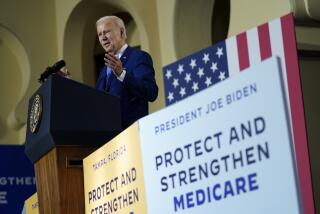Funny Numbers Don’t Help : Administration invites doubt with diverging figures on health care costs
- Share via
President Clinton’s health care plan may well be among the most complex pieces of social legislation ever placed before Congress. Complexity is never an easy sell, because legislators and the people they represent tend to be suspicious about any proposal whose details seem unclear or hard to understand. When it comes to making basic changes in something as emotion-laden as access to health care and how it’s paid for, suspicions can be especially acute. All the more reason the Administration must strive to be, if not incontestably accurate, which is impossible, at least reasonably credible in how it presents this key issue.
The last week or so wasn’t a good time for the cause of credibility. On the politically vital question of how many currently insured Americans might have to pay more for health coverage under the Clinton plan, two top Administration spokespersons seemed to offer different answers. Donna Shalala, secretary of health and human services, estimated that 40% would see their costs rise. Soon after, Leon E. Panetta, the budget director, told Congress that only 30% would face increased costs.
Were Shalala and Panetta talking about the same plan? Yes, but apparently they weren’t talking about the same total costs.
Shalala, according to the Administration, was looking only at premiums. Panetta, however, was also factoring in such out-of-pocket expenses as co-payments. The White House seems content for now to stand behind Panetta’s estimate--not surprisingly, since it instantly reduced by one-fourth the number of Americans who might be put out of pocket by the Clinton plan.
It takes no wizardry to predict that this latest figure, along with virtually every other assumption-based number in the health plan, could change many times before Congress votes on a final bill. And even then the numbers are likely to be guesswork of dubious worth. Witness what happened to projected costs once Medicare and Medicaid got rolling.
Uncertainties, unavoidably, go with the territory. The best that can be hoped for is that the Administration and prudent legislators will be able to whittle those uncertainties down to tolerable size.
More to Read
Get the L.A. Times Politics newsletter
Deeply reported insights into legislation, politics and policy from Sacramento, Washington and beyond. In your inbox twice per week.
You may occasionally receive promotional content from the Los Angeles Times.









